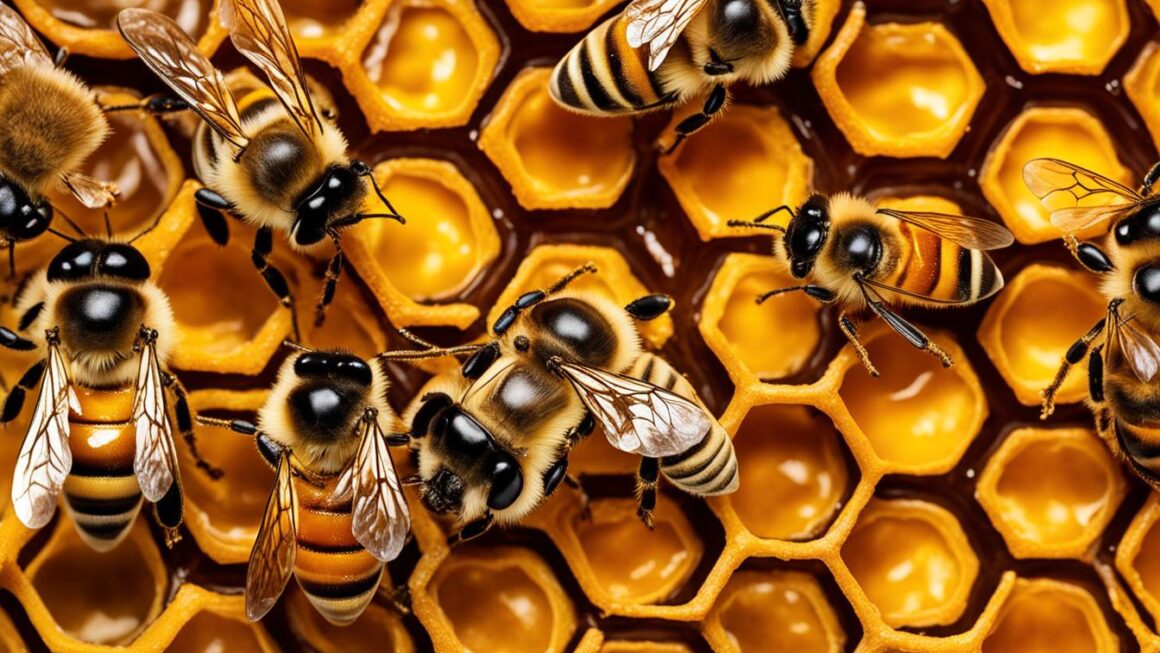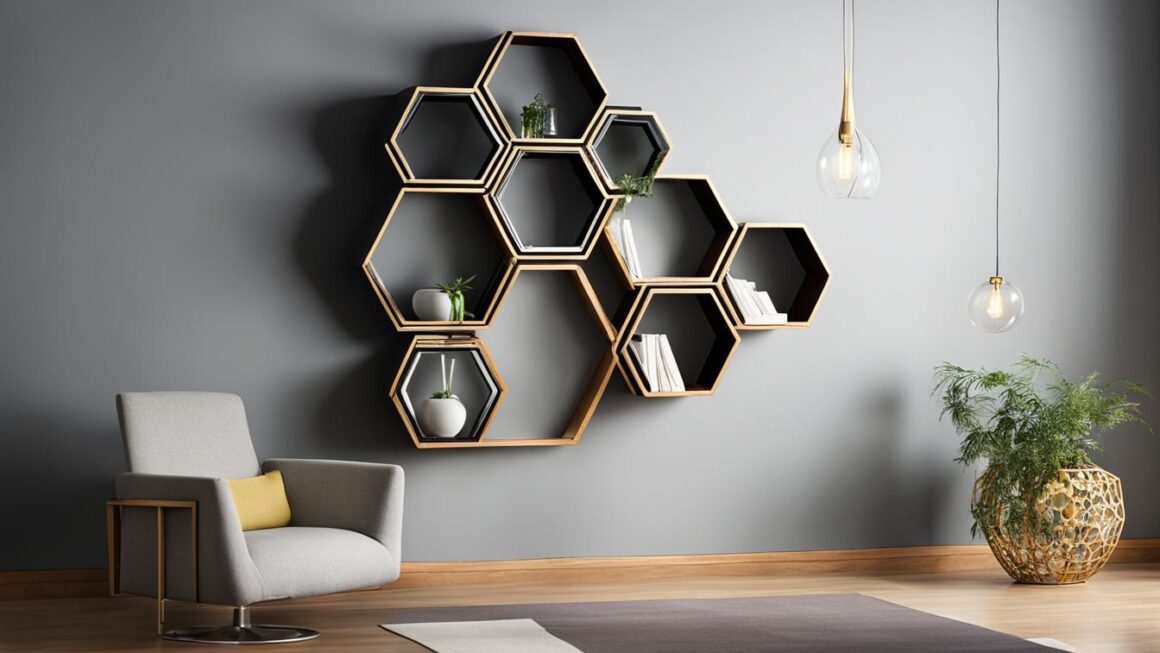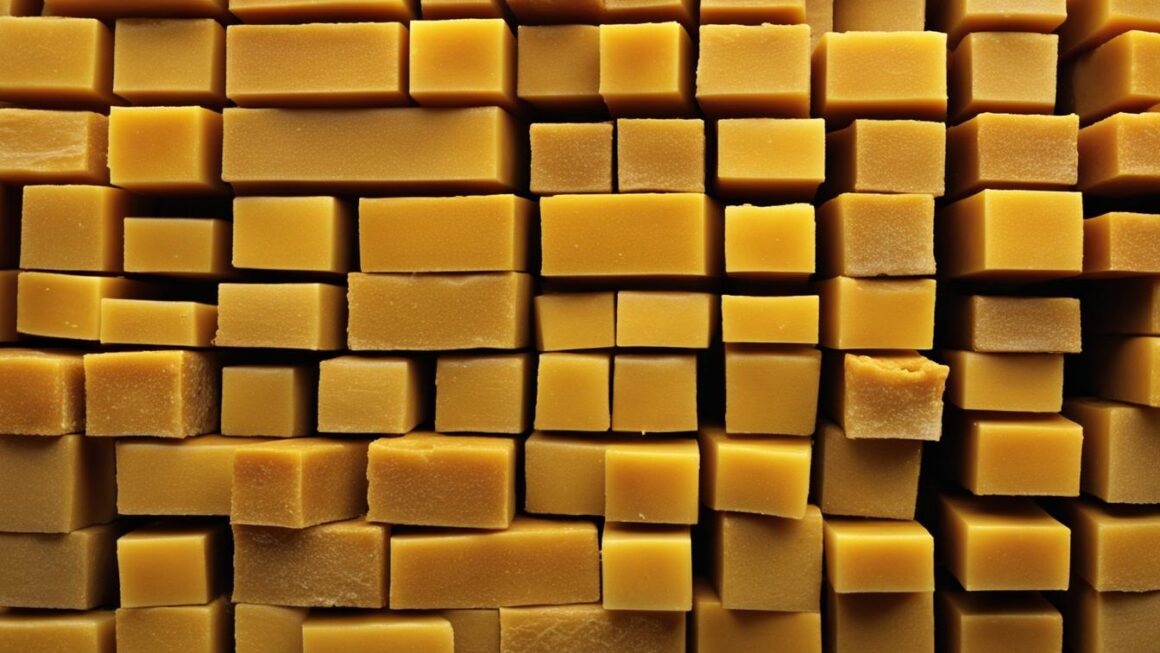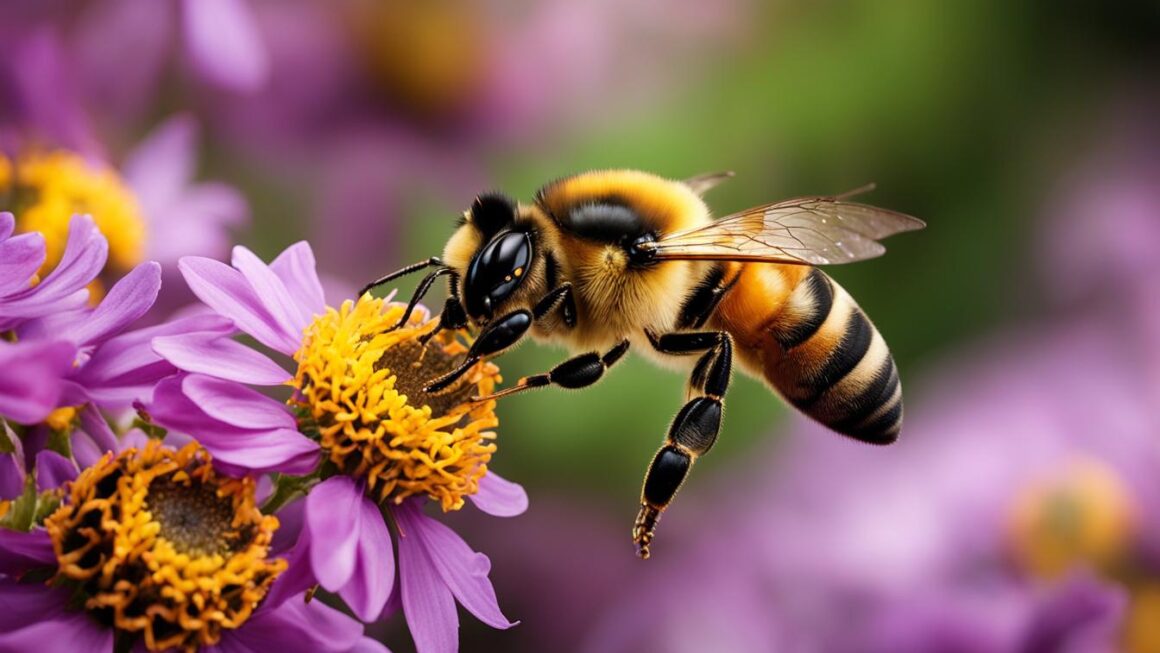Comb honey is a pure and untouched delight created by honey bees. It’s honey that is not strained, heated, or processed before consumption, emphasizing the natural beauty and taste of honey. Harvesting comb honey is a simple and rewarding process that requires minimal equipment. By following proper techniques and timing, beekeepers can optimize their honey harvest and enjoy the maximum health benefits from the hive.
Comb honey can be used in various ways, whether it’s cutting it into chunks and sprinkling over salads, serving it with cheese or fruits, or using it as a centerpiece for breakfast or brunch displays. Its unique presentation and rich flavor make it a sought-after product in the market.
Key Takeaways:
- Harvesting comb honey retains the natural goodness of beeswax, pollen, and propolis.
- Comb honey offers an authentic and unaltered honey experience.
- Minimal equipment and effort are required to harvest comb honey.
- Comb honey fetches a premium price due to its unique presentation and superior quality.
- Comb honey can be used in various culinary applications, enhancing the taste and presentation of dishes.
Why Harvest Comb Honey?
Harvesting comb honey offers several compelling reasons for beekeepers to consider this method. Firstly, comb honey retains essential components like beeswax, pollen, and propolis, providing maximum health benefits from the hive. These natural substances contribute to the richness and complexity of the honey’s flavor profile, showcasing the unique qualities of the bees’ work. Secondly, comb honey undergoes minimal alteration during the harvesting process, ensuring a more authentic and unadulterated honey experience for consumers. This appeals to those seeking a closer connection to nature and a desire for a pure, untouched product.
Another significant advantage of harvesting comb honey is its ease and efficiency. Compared to other honey extraction methods, comb honey requires the least amount of work for beekeepers. Since it involves minimal processing and equipment, it is a straightforward and time-saving approach, making it suitable for both beginners and experienced beekeepers. Additionally, comb honey’s distinctive presentation, with its natural hexagonal cells and beeswax, enhances its market appeal, allowing beekeepers to command a premium price for their product.
Reasons to Harvest Comb Honey:
- Retains essential components like beeswax, pollen, and propolis
- Provides a more authentic and unadulterated honey experience
- Requires minimal work and equipment
- Commands a premium price due to its unique presentation
Overall, harvesting comb honey offers a range of benefits, from maximizing the health benefits of honey to providing a more natural and authentic honey experience. Its simplicity and market appeal make it an attractive option for beekeepers looking to optimize their honey harvest.
| Benefits of Harvesting Comb Honey |
|---|
| Retains essential components like beeswax, pollen, and propolis |
| Provides a more authentic and unadulterated honey experience |
| Requires minimal work and equipment |
| Commands a premium price due to its unique presentation |
Harvesting Comb Honey: Step-by-Step Guide
Harvesting comb honey involves a series of simple steps to ensure a successful honeycomb harvest. Proper setup of the hive is essential for the bees to produce high-quality comb honey. Start by replacing the foundation with a starter strip drizzled with melted beeswax, which encourages beeswax production. It is important to ensure that the hive is level and that the frames are properly spaced to provide sufficient room for the bees to build comb honey.
When it comes time to pull frames from the hive, it is best to gently brush off the bees using a feather or brush instead of using smoke, as smoke can taint the flavor of the honey. The comb honey can be harvested either all at once or one frame at a time, depending on the beekeeper’s preference and the amount of honey available. If harvesting one frame at a time, be sure to replace the frame immediately to avoid any disturbance to the hive.
To harvest the honeycomb, it is necessary to cut it into appropriately sized pieces that fit your chosen containers. Freezing the honeycomb before cutting or after placing it in containers can help remove excess honey and make the cutting process easier. Plastic clamshell containers or jars with liquid honey can be used as storage containers for comb honey, providing an attractive presentation and preserving the honey’s natural flavors.
Table: Equipment for Harvesting Comb Honey
| Equipment | Description |
|---|---|
| Starter Strip | A strip of beeswax that encourages bees to build comb honey |
| Feather or Brush | Used to gently brush off bees from the frames |
| Freezer | Used to freeze honeycomb for easier cutting |
| Plastic Clamshell Containers | Containers used for storing and presenting comb honey |
| Jars with Liquid Honey | Alternative containers for storing comb honey |
Harvesting comb honey is a rewarding experience that allows beekeepers to enjoy the natural beauty and taste of honey in its purest form. By following these step-by-step guidelines and using the right equipment, beekeepers can ensure a successful harvest and produce high-quality comb honey.
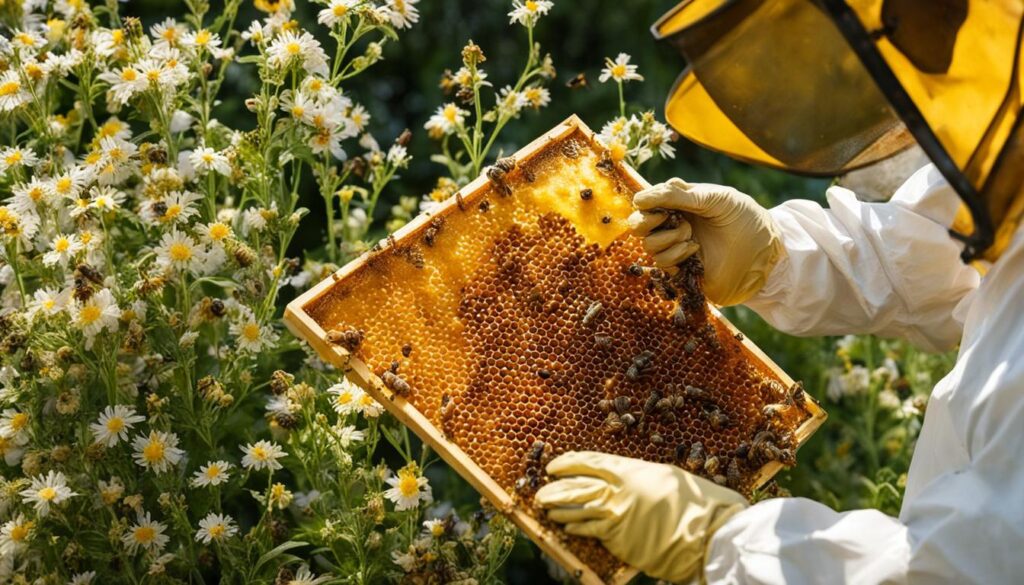
The Crush and Strain Method for Honeycomb Harvesting
The crush and strain method is a simple and beginner-friendly technique for extracting honey from honeycomb. It is a cost-effective option for small-scale beekeepers with one or two hives who may not have access to specialized equipment. This method involves squishing the cells of the comb to release the honey, resulting in the destruction of the comb and rendering it unusable by the bees.
To implement the crush and strain method, beekeepers will need a few basic tools. A potato masher or food-grade plastic bucket can be used to crush the honeycomb cells and separate the honey. A long-serrated knife is helpful for cutting and manipulating the comb. A honey strainer or cheesecloth can be used to remove any wax or debris from the extracted honey.
When using the crush and strain method, it’s important to keep in mind that the comb will be destroyed in the process. This means that the comb cannot be reused by the bees in the hive, and new comb will need to be produced. However, this method can still be a viable option for beekeepers who prioritize simplicity and do not mind sacrificing the comb for the sake of extracting honey.
The crush and strain method is a great way for beginners to harvest honeycomb without the need for specialized equipment. It allows you to enjoy the taste of honey in its purest form, while also providing an opportunity for beekeepers with limited resources to participate in honey extraction.”
The Crush and Strain Method: Step-by-Step Guide
| Steps | Instructions |
|---|---|
| 1 | Remove the honeycomb frames from the hive. |
| 2 | Use a long-serrated knife to cut the honeycomb into smaller pieces. |
| 3 | Place the honeycomb pieces in a food-grade plastic bucket or container. |
| 4 | Crush the honeycomb using a potato masher or other suitable tool. |
| 5 | Allow the crushed honeycomb to sit for a period of time to allow the honey to drain. |
| 6 | Strain the honey through a honey strainer or cheesecloth to remove any wax or debris. |
| 7 | Bottle the strained honey in sanitized containers for storage or sale. |
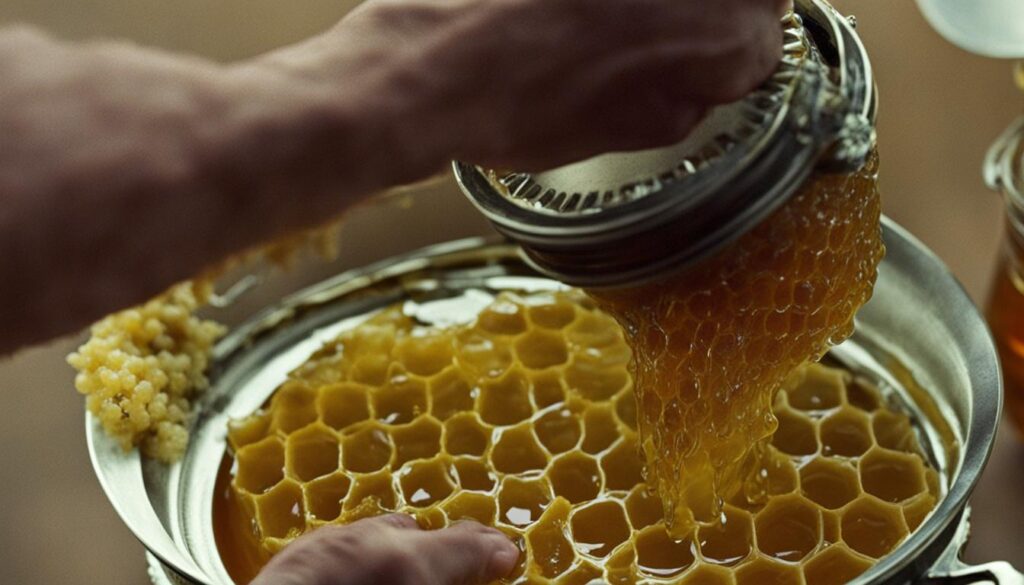
The crush and strain method offers a straightforward approach to honey extraction for beginners. While it does result in the destruction of the honeycomb, it can still be a practical and cost-effective option for beekeepers with limited resources. By following the step-by-step guide and using the necessary tools, beekeepers can extract honey from honeycomb and enjoy the fruits of their labor.
Determining When to Harvest Honeycomb
Determining the right time to harvest honeycomb is crucial for beekeepers to ensure optimal honey quality and quantity. Several factors play a role in determining the timing of the harvest, including nectar flow, moisture content of honey, and the needs of the bees. Understanding these factors will help beekeepers make informed decisions and maximize their honeycomb harvest.
The Role of Nectar Flow
Nectar flow refers to the period when nectar-producing flowers are abundant, providing a steady supply of nectar for honey bees. The timing and duration of nectar flow vary depending on the geographic location and seasonal changes. Beekeepers should monitor the local nectar flow patterns to determine when honeycomb frames are filled with wax-capped honey, indicating the readiness for harvest.
Monitoring Moisture Content
Moisture content is an important consideration when harvesting honeycomb. Honeycomb frames with open celled honey can be harvested, but beekeepers must ensure that the moisture content of the honey is between 17-21% to prevent fermentation and spoilage. Beekeepers can use a refractometer to measure the moisture content of honey and make informed decisions about the harvest.
Considering Bee Needs
Beekeepers must also consider the needs of the bees when determining the timing of honeycomb harvest. It is important to leave enough honey in the hive for the bees to sustain themselves during winter. The amount of honey to leave depends on the climate and the region’s winter conditions. Colder regions generally require more honey for overwintering.
| Factors | Timing |
|---|---|
| Nectar Flow | Monitor local nectar flow patterns |
| Moisture Content | 17-21% for open celled honey |
| Bee Needs | Leave enough honey for winter |
Determining when to harvest honeycomb requires careful observation and understanding of nectar flow, moisture content, and bee needs. By considering these factors, beekeepers can ensure optimal honey quality and maintain the well-being of their honey bee colonies.
Harvesting Honeycomb: Manual or Electric Extractor Method
When it comes to harvesting honeycomb, beekeepers have two main methods to choose from: manual extraction and electric extraction. Each method has its own advantages and considerations, so beekeepers should evaluate their specific needs and resources before making a decision.
For those who prefer a hands-on approach, manual extraction is a popular choice. With this method, beekeepers remove the frames from the hive and use an uncapping knife to remove the wax caps from the honeycomb cells. This allows the honey to flow out freely. Once the honeycomb is uncapped, the frames are placed vertically in a manual extractor. Beekeepers manually spin the frames to extract the liquid honey, which then flows out through a sieve or strainer to remove any impurities before bottling.
On the other hand, electric extraction offers a more automated and labor-efficient solution. With an electric extractor, beekeepers still need to remove the frames from the hive and uncap the honeycomb cells. However, instead of manually spinning the frames, the electric extractor does the work. This saves time and effort for the beekeeper, especially when dealing with larger quantities of honeycomb.
While electric extractors offer convenience, they can be more expensive than manual extractors. Additionally, they require a power source to operate. On the other hand, manual extractors are more affordable and can be a suitable option for small-scale beekeepers or those who prefer a more hands-on approach to honey harvesting. Ultimately, the choice between manual and electric extraction depends on the beekeeper’s preferences, resources, and the scale of their operation.
Bottling and Labeling Honeycomb
Once the honeycomb has been harvested, it is important to properly bottle and label it to ensure its quality and compliance with labeling requirements. Choosing the right containers and following labeling guidelines is crucial for both presentation and legal purposes.
Honeycomb Bottling
When it comes to selecting containers for honeycomb, it is essential to choose sanitized and airtight options that will preserve the freshness and quality of the honey. Glass jars and plastic bottles are popular choices for bottling honeycomb.
Bottles and jars should be fully dry before filling them with honeycomb to prevent bacteria growth. For quicker drying, glass jars can be oven-dried. It is recommended to use containers specifically designed for food storage to ensure the honeycomb remains safe for consumption.
Honeycomb Labeling Requirements
Complying with labeling requirements is crucial when selling honeycomb. The labeling should include essential information to inform consumers about the product and its origin.
Labeling requirements may vary depending on the jurisdiction, but common labeling elements include the common food product name, net weight of honey, beekeeper’s name, contact information, and the address of production.
For example, in Oklahoma, beekeepers selling honeycomb must meet specific labeling requirements set by the Oklahoma Apiary Act. This includes stating that the honey was bottled in an uninspected facility.
Table: Overview of Honeycomb Bottling and Labeling Requirements
| Labeling Element | Description |
|---|---|
| Common Food Product Name | The name by which the honeycomb will be known to consumers. |
| Net Weight of Honey | The weight of the honeycomb, typically measured in ounces or grams. |
| Beekeeper’s Name | The name of the beekeeper or the beekeeping enterprise. |
| Contact Information | The contact details of the beekeeper, including phone number or email address. |
| Address of Production | The address where the honeycomb was produced or bottled. |
By following proper bottling and labeling practices, beekeepers can ensure that their honeycomb products meet industry standards and attract consumers with their quality and presentation.
Marketing and Liability Considerations
Once you have successfully harvested and bottled your honeycomb, it’s time to think about marketing your products and protecting yourself from potential liabilities as a beekeeper. Building a strong marketing strategy is essential to reaching your target audience and increasing honey sales. Start by leveraging word-of-mouth referrals among friends, neighbors, and coworkers. These personal recommendations can go a long way in generating buzz around your honeycomb products.
Consider participating in local farmers’ markets, where you can showcase your honeycomb and engage with potential customers. However, before selling your honey products, it’s crucial to familiarize yourself with state and local ordinances. For example, in Oklahoma, beekeepers must meet specific requirements and comply with labeling regulations. By understanding and adhering to these regulations, you can ensure that your honeycomb is market-ready and meets all legal obligations.
Liability insurance is also an important consideration for beekeepers.
As a beekeeper, you may face potential liabilities, such as property damage or personal injury claims related to your beekeeping activities. To protect yourself and your enterprise, it is advisable to explore liability insurance options. General liability insurance can cover accidents or injuries that may occur on your premises, while product liability insurance can protect you against claims arising from the consumption of your honeycomb products. Additionally, consider personal property insurance to safeguard your beekeeping equipment and other assets.
By implementing effective marketing strategies and obtaining liability insurance, you can confidently promote and sell your honeycomb products while mitigating potential risks. Remember to comply with labeling requirements and regulations specific to your location, and always prioritize the well-being of your bees and the quality of your honeycomb.
Conclusion
Optimizing your honeycomb harvest is essential for beekeepers looking to maximize their honey harvest yield. Whether you choose traditional comb honey harvesting techniques or the crush and strain method, following proper procedures and timing is key. By emphasizing the natural beauty and taste of honey through comb honey, you can enjoy its full health benefits, including beeswax, pollen, and propolis.
Remember to prioritize the needs of your bees by leaving enough honey in the hive for their sustenance during winter. Harvest the honeycomb when at least 80% of the cells are filled with wax-capped honey, ensuring it has the ideal moisture content of 17-21%.
Compliance with labeling and regulatory requirements is important when bottling and selling honeycomb. By understanding and fulfilling these obligations, you can explore marketing strategies and avenues to promote and sell your honey products, such as farmers’ markets and word-of-mouth referrals.
By optimizing your honeycomb harvest, following proper honey harvesting techniques, and maximizing your honey harvest yield, you can ensure the success and satisfaction of your beekeeping endeavors.
FAQ
What is comb honey?
Comb honey is honey that is not removed from the honeycomb before consumption. It is 100% natural and includes beeswax, pollen, and propolis.
What are the advantages of harvesting comb honey?
Harvesting comb honey allows for maximum health benefits from the hive, retains the natural authenticity of the honey, and requires minimal effort for beekeepers. It also sells at a premium price due to its unique presentation.
How do I harvest comb honey?
To harvest comb honey, you need to set up the hive with a starter strip, gently brush off the bees, and cut the honeycomb into size pieces that fit containers. Freezing the honeycomb before cutting or after placing it in containers can help remove excess honey.
What is the crush and strain method?
The crush and strain method involves squishing the cells of the comb to extract the honey. This method is cost-effective for small-scale honey harvesting but destroys the comb and cannot be reused by bees.
When should I harvest honeycomb?
Honeycomb frames can be harvested when 80% or more of the cells are filled with wax-capped honey. Open celled honey can also be harvested, but the moisture content should be monitored to avoid fermentation and spoilage.
Should I use a manual or electric extractor for honeycomb extraction?
Both manual and electric extractors can be used for honeycomb extraction. Manual extractors are more affordable, while electric extractors are more labor-efficient.
How do I bottle and label honeycomb?
Bottling honeycomb involves selecting sanitized and airtight containers, ensuring they are fully dry before filling. Compliance with labeling requirements, such as the common food product name, net weight of honey, and beekeeper’s contact information, is also important.
How can I market honeycomb and what are liability considerations?
Beekeepers can market honeycomb through word of mouth referrals and selling at farmers’ markets, but it’s important to comply with state and local regulations. Liability insurance is recommended to protect against legal repercussions, and various insurance plans are available.
How can I optimize my honeycomb harvest?
By following proper techniques and timing, considering the needs of the bees, complying with labeling and regulatory requirements, and exploring marketing strategies, beekeepers can maximize their honeycomb harvest yield.

